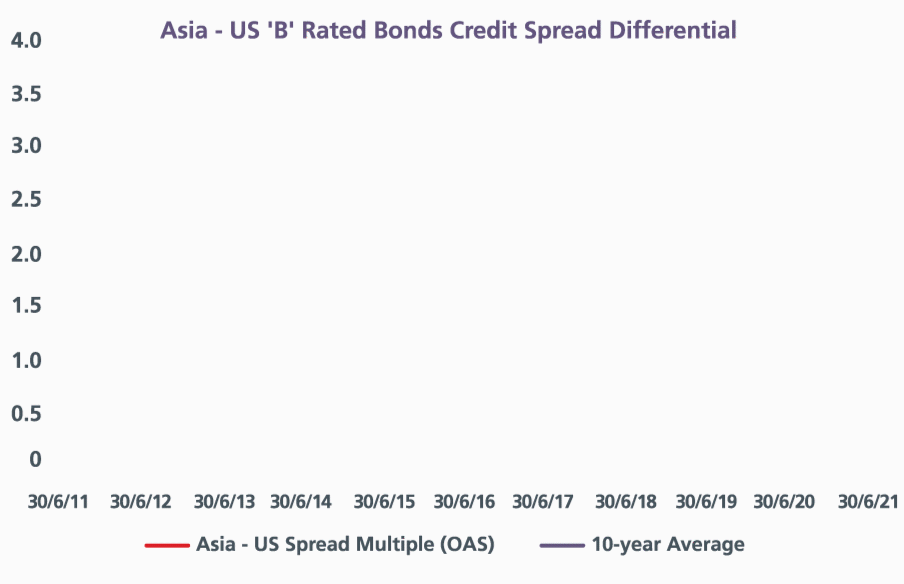Asian High Yields: Navigating the volatility
The Asian High Yield (AHY) bond market has experienced significant volatility since the start of the 2021. In April, Huarong Asset Management, China’s largest distressed debt investor’s delay in releasing its 2020 results kicked off big swings in the company’s bonds and speculation about its future. Ever since, questions on the implicit Chinese government’s support of State-Owned Enterprises (SOEs) have weighed on selected China SOEs and government-linked issuers. More recently, negative news flow on property developer Evergrande has spilled over to the rest of the Chinese high yield property sector.
Wai Mei Leong, the lead portfolio manager for Eastspring Investment’s AHY bond strategy, believes that volatility is here to stay in the near term, as investor sentiment remains vulnerable to any negative news flow from the Chinese property sector. Funding channels are tight with the government’s increased scrutiny on commercial bills and off-balance sheet alternatives such as trust loans. Banks have also turned more cautious towards highly leveraged property developers amid the government’s tighter lending policies.
That said, Wai Mei notes that valuations have become more attractive for Chinese high yield property names. In particular, the ‘B’ rated bonds within the sector have corrected significantly.
While the tight financing conditions in the property sector may still exert pressure on weaker issuers, default risk in the sector should remain manageable.
The wider spreads can probably more than compensate for the expected rise in default rates in 2021. Meanwhile, the Chinese central bank’s reserve requirement ratio (RRR) cut in July was broader than expected. The cut has improved risk sentiment towards onshore and offshore property issues. This potentially paves the way for new bond issues to come to market, as seen post the RRR cut. If this positive development continues, it can help ease refinancing concerns. Against this backdrop, credit selection remains key and she is prudent in taking advantage of the emerging opportunities. Credits are being assessed on a case by case basis, examining the issuers’ deleveraging plans, ability to monetise landbank and scale of operations amongst other factors.
AHY’s current spread above US high yield bonds is at its highest since December 2010. See Fig. This spread difference is likely to more than compensate for Asia’s forecasted defaults in 2021. You can see how Asia’s high yield default rate compares to its global peers here. For investors willing to stay the course, AHY’s higher yields should remain attractive in a world where the economic recovery is uneven, and where rates are expected to stay lower for longer, yet again.

Source: Bloomberg, ICE Benchmark Administration Limited (IBA), 30 June 2021 (daily data); ICE BofAML single B Asian Dollar High Yield index and single B US High Yield index Option-Adjusted Spread HY: High Yield. Please note that there are limitations to the use of such indices as proxies for the past performance in the respective asset classes/sector. The chart above is included for illustrative purposes only and may not be indicative of the future or likely performance of the markets

